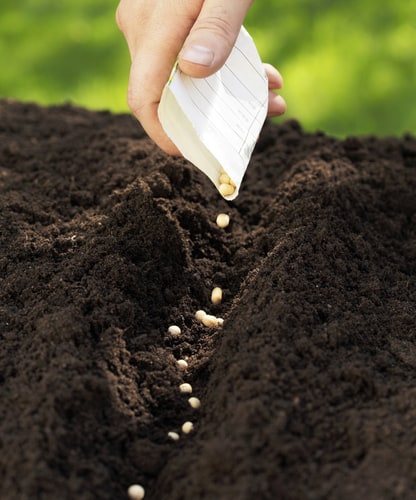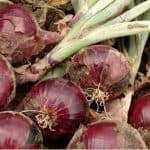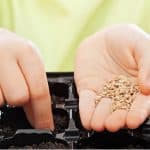Last updated on March 22nd, 2022
Our site is reader supported, this means we may earn a small commission from Amazon and other affiliates when you buy through links on our site.
Every month there are tasks to be completed in your garden. Just because it isn’t the height of the growing season doesn’t mean there aren’t things you can be doing. If you find yourself on a blustery new year’s day thinking about what steps to take for January, keep reading.
What to do in January
- Buy seed potatoes and store them for chitting.
- Buy onion sets ready for planting.
- Feed fruit trees and bushes with Sulphate of potash.
- Check any winter protection and canes for damage that may have occurred in bad weather.
- Check Hellebores for leaf spot and remove affected leaves.
- Prunes roses just above a good set of buds.
- Remove any dead, diseased or damaged stems from willows and thin out stems.
- Prune blackcurrants, redcurrants and gooseberries to a framework. Do not prune plums, cherries or apricots yet.
- Plant bare root trees.
- Repot any newly purchased pot grown Christmas trees or plant in the ground.
- Dig over any empty pots ready for planting.
- Prune apples trees and pears.
- Keep feeding birds and giving them fresh water.
- Start forcing rhubarb by covering the crowns with an upturned bucket or bin to block our light.
- Clean any old pots and your greenhouse if you have not already done so.
Buy seed potatoes early for the best pick
If you are looking to incorporate potatoes into your garden or grow them in potato bags, January is the perfect month to get started. In January the first step to a successful garden is to buy seed potatoes. The earlier you start shopping for these potatoes, the better the variety you will have. Check out local nurseries and garden centres where you can buy a variety of potatoes including early, second early and maincrop varieties. You want to find potatoes that are nice and firm and of course, avoid any potatoes with mould.
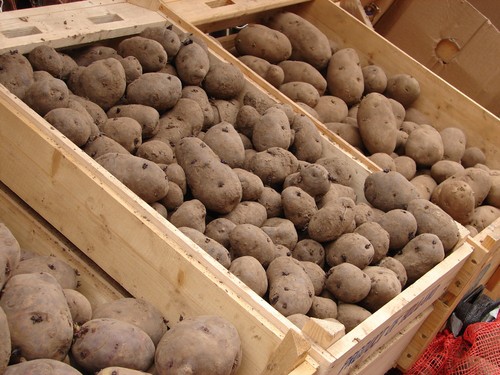
As soon as you get your new purchases home, put them into a seed tray, or place them in an old egg container and set them aside somewhere cool until it is time to plant them. This will help the potatoes to start chitting which should give them a headstart once planted.
Fruit Tree Feeding Time
Just because you don’t have potatoes or don’t want potatoes, doesn’t mean there aren’t still tasks to be done in January.
If you have any fruit trees or fruit bushes, January is when you should start feeding to help them fruit better later down the road. All of the fruit-bearing plants in your garden should be given a boost with some sulphate of potash around the base, gently mixed into the soil. As you mix the fertiliser, be careful not to dig it in too deeply and damage any roots. It’s recommended that you mulch around the fruit plants when you are done to help them preserve moisture.
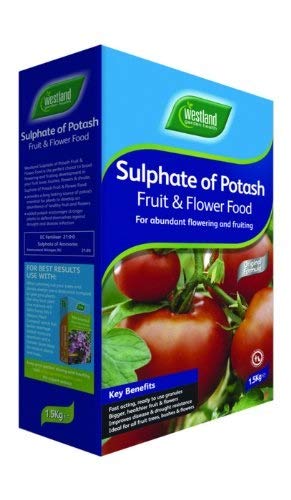 Find the food for fruit trees on Amazon.co.uk by clicking the image.
Find the food for fruit trees on Amazon.co.uk by clicking the image.
Feeding will help to encourage flowers and, subsequently, fruit. When doing so, be sure to read the instructions on the package so that you add only as much as is recommended. You might be tempted to add extra, but this will actually damage your plants. The same is true of any plant to which you add fertiliser. Always stick to the recommended amount as stipulated on the container as overfeeding is a common mistake.
Preventative Measures
Being that January is smack in the middle of winter, be particularly vigilant about preventative measures against fungal diseases.
Keep your eyes out for Hellebore leaf spot, it’s fairly common and can become a problem. Hellebore leaf spot is a fungal disease that results in brown spots with a circular shape on the stems and the leaves of any Hellebores.
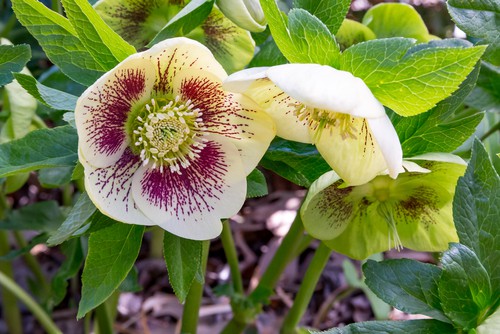
If you notice an infection, January is the time to remove that growth before it spreads. It’s recommended that you cut off all of the foliage that you find to be diseased otherwise it can spread to growth from the newest season and results in a thoroughly infected plant. Some gardeners even advise cutting the whole plant down, even if not every part is infected to avoid getting it in spring on the new foliage.
Planting bare root Trees
If you don’t have trees but you’re ready to start growing them, January is a perfect time. In fact, make it part of your New Year’s resolution because it also helps local birds, as we discussed in this article.
If you are planting a fruit tree or an ornamental tree, January is the time to do it. Deciduous plants are typically dormant at this time so you can purchase them as bare root trees at a significantly cheaper rate, sometimes less than half the price. A bare root tree simply means the tree is not grown in a pot and they are lifted from a field when they are dormant. You can pick them up from a nursery or order them online.
When your trees arrive, you want to plant them as soon as you are able. If the weather is too wet or the ground is frozen, you might have to wait a few days. Still, as soon as you are able, dig a hole in your garden and place the tree where you want it to reside permanently. This hole should be no deeper than the roots on the tree as they exist currently. The hole should be twice as wide as the roots. When you put the tree into the hole, be sure to spread the roots around and then refill the hole with soil, gently patting down the soil as you do so to remove any air pockets.
Starting off the first vegetables of the year
There are even a few vegetables you can get started in January. Bring in the New Year by starting your crops of peas. Sow your peas directly into the ground in January and sit back and wait for the warm weather to bring you something tasty. It can also help to lay fleece over the soil for a few weeks to keep the soil warm.
